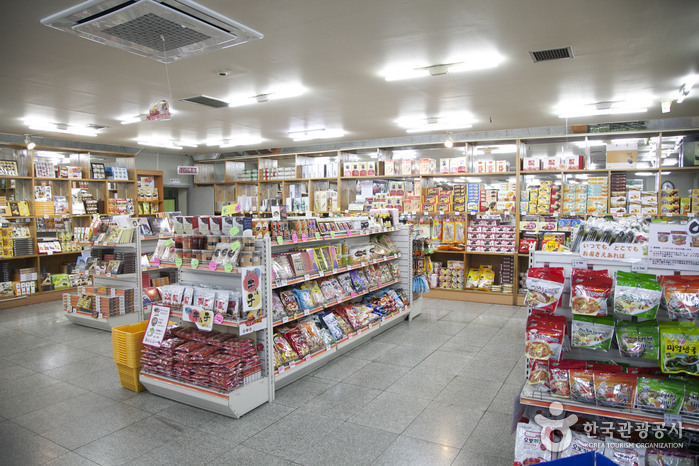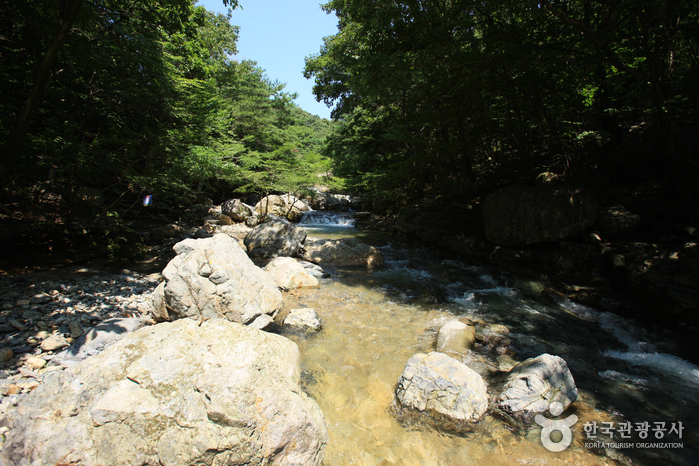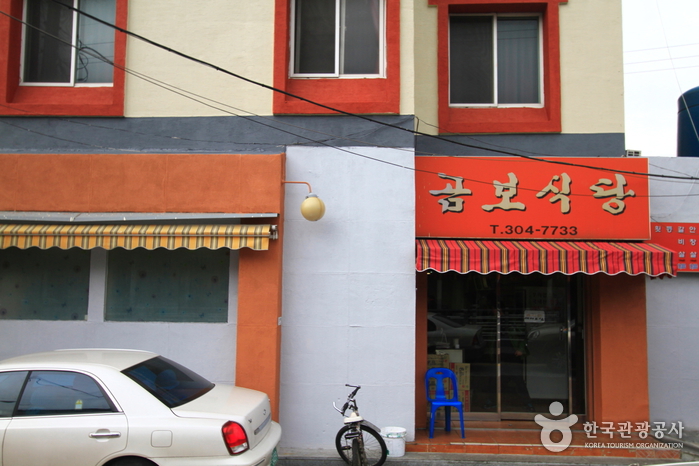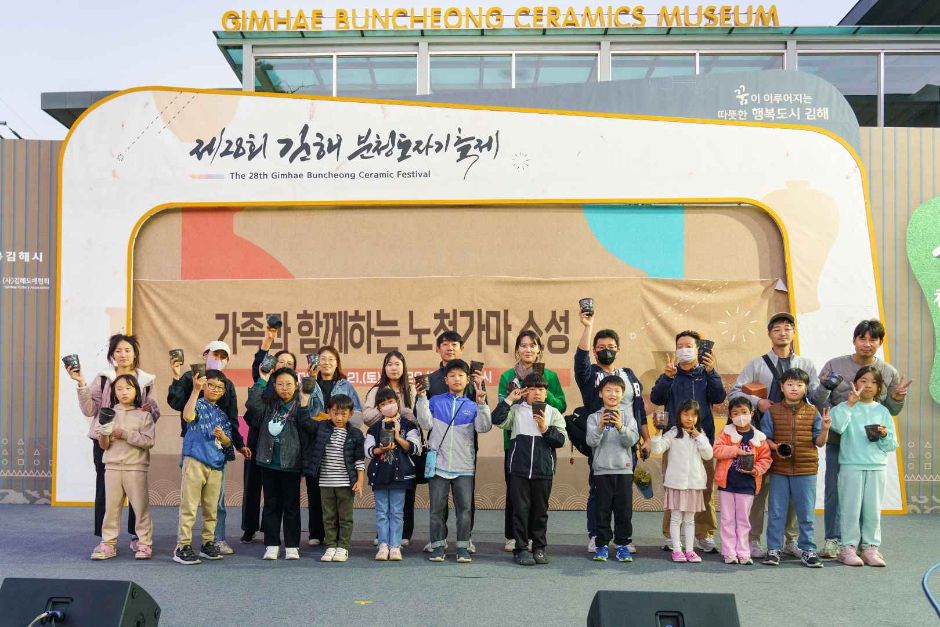Traditional Korean Folk Food - Busan Branch (한국민속식품 (부산))
9.9Km 2021-05-12
71-1, Gonghang-ro 811beon-gil, Gangseo-gu, Busan
+82-51-971-4133
The Traditional Korean Folk Food is a store located near the entrance of Gimhae International Airport that sells Korean foods and folk items.
Daejeo Eco Park (대저생태공원)
10.4Km 2024-03-05
1246 Gonghang-ro, Gangseo-gu, Busan
+82-51-971-6011
Daejeo Eco Park is an ecological park stretching from Gupodaegyo Bridge to the Nakdonggang Estuary Bird Sanctuary. It encompasses various wetlands and waterways, including Sindeokseupji Wetland, along with grasslands, mustard flower fields, and various sports facilities, providing a place for leisure and relaxation. Particularly noteworthy is the Mustard Flower Festival held annually in April at the mustard flower field developed below the Gupodaegyo Bridge.
Daedong Halmae Guksu ([백년가게]대동할매국수)
10.5Km 2024-02-23
8 Dongnam-ro 45beon-gil, Daedong-myeon, Gimhae-si, Gyeongsangnam-do
Daedong Halmae Guksu, a well-known noodle restaurant in Gimhae, is famous for its signature dish, janchiguksu (banquet noodles). The restaurant serves naturally dried noodles paired with a flavorful broth made from anchovies sourced from the southern coast. Each table is equipped with chili peppers and seasoning sauce, allowing diners to customize their dish to their taste. In addition to janchiguksu, the menu also includes bibimguksu (spicy noodles) and yubuchobap (fried bean curd riceball).
Jangyu Daecheonggyegok Valley (장유대청계곡)
11.0Km 2022-08-12
Wolsan-ro, Gimhae-si, Gyeongsangnam-do
+82-55-350-1931
The 6-kilometer-long Jangyu Daecheonggyegok Valley is located at the foot of Bulmosan Mountain, where the water flowing into the valley divides into two principal streams. Lush trees and clean water make up the area’s beautiful natural landscape. A 30-minute hike along the valley will take hikers to Jangyuam Hermitage where they will find the stupa of Jangyuhwasang, who is said to have spread Buddhism for the first time in Korea.
Visitors flock to Jangyu Daecheonggyegok Valley not only to enjoy the scenery, but also to taste the delicious duck, chicken, and baeksuk (chicken soup with rice) dishes sold around the area. In 1984, the valley was integrated into Jangyupokpo Recreational Park where bridges were built and water supply facilities were placed at two locations. Sangjeolgyo Bridge at the entrance to the valley is 30 meters, while Bonpogyo Bridge is 4 meters. A 1,720 meter-long forest trail was also created. The rugged mountain terrain offers a challenging, yet highly interesting climb up the mountain.
Chowonnongwon (초원농원)
11.1Km 2019-12-24
1498, Nakdong-daero, Sasang-gu, Busan
+82-51-301-1592
Chowonnongwon is located near Samrakgangbyeon Park, a famous park in Busan, that offers an entire view with Nakdonggang River and the park at a glance. The restaurants serves hanu (Korean beef) at reasonable prices.
Gombo Sikdang (곰보식당)
11.3Km 2020-02-03
1564, Nakdong-daero, Sasang-gu, Busan
+82-51-304-7733
Gombo Sikdang serves various raw meat like omasum and liver of the freshest quality thanks to its location close to Gupo slaughterhouse. The restaurant is famous for galbisal (ribs), yukhoe (beef tartare), and gopchang jeongol (intestine hot pot). The seonjitguk (blood cake soup) served after the meal is another draw to this restaurant.
Halmae Jaecheop Guk (할매재첩국)
11.3Km 2020-09-14
20-15, Nakdong-daero 1530beon-gil, Sasang-gu, Busan
+82-51-301-5321
Halmae Jaecheop Guk is a restaurant featuring jaecheop guk (marsh clam soup). Since its opening 28 years ago in the food village beside Nakdong River, its reputation has spread by word of mouth. Jaecheop guk is long been famous as a good hangover cure. The restaurant cooks the soup over a wood fire to give it a special flavor.
Busan International Rock Festival (부산국제록페스티벌)
11.4Km 2025-07-09
Samnak-dong, Sasang-gu, Busan
+82-51-713-5000
Busan International Rock Festival is a leading music festival in Korea, representing the openness and youth of the coastal city of Busan. The festival is organized with the goals of discovering new musical talent, revitalizing the music industry, and celebrating indie bands. Along with the international film festival in October, the Busan International Rock Festival has played a vital role in promoting the artistic affluence of Busan, the largest port city in South Korea. The festival is widely recognized for its impressive lineup each year and for strengthening ties between renowned musicians worldwide. Additionally, the festival features a wide array of famous food trucks from across the country. It is a fun and widely attended event that is a must-see for any rock music fan in Korea.
Gimhae Buncheong Ceramics Festival (김해분청도자기 축제)
11.6Km 2025-07-11
17 Buncheong-ro, Jillye-myeon, Gimhae-si, Gyeongsangnam-do
+82-55-330-3245
The Gimhae Buncheong Ceramics Festival highlights the excellence of Buncheong ceramics and their everyday appeal. The festival offers a chance to see a wide variety of ceramics and participate in hands-on activities such as traditional kiln firing.
Clayarch Gimhae Museum (클레이아크 김해미술관)
11.7Km 2022-12-29
275-51, Jillye-ro, Jillye-myeon, Gimhae-si, Gyeongsangnam-do
The name “Clayarch” is a compound word of clay and arch, short for“architecture.” It embodies the basic spirit of the museum, which is to pursue development in the field of architectural ceramics through working with science, art, education, and industry.
Clayarch Gimhae Museum aims to play a leading role in the development of architectural ceramics, which are now spreading across the globe. It intends to do so by rediscovering the relationship between ceramics and architecture – a matter that has been relatively ignored – as a new direction for ceramic art. This reflects the pluralism of this time, which seeks to pursue something creative and new and to overcome the limitations of specific fields through working with different genres. The museum seeks to actively lead this artistic attempt, and make aesthetic and scientific achievements in this field with theoretical backing gained through academic activities, lectures, and research.







 English
English
 한국어
한국어 日本語
日本語 中文(简体)
中文(简体) Deutsch
Deutsch Français
Français Español
Español Русский
Русский